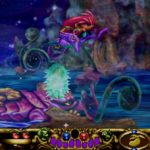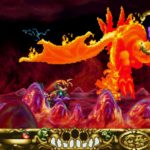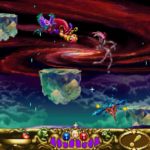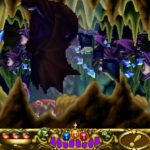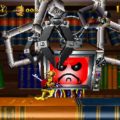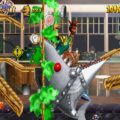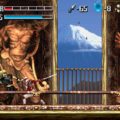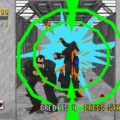Developer: Sega Publisher: Sega Release: 09/27/95 Genre: Platformer
Heading into the 32-bit generation the future looked bright. The 2d platformer was near perfect, with some of the best games of all time released at the tail end of the 16-bit era. I am sure many like myself were sure we would get more games like Yoshi’s Island and Donkey Kong Country 2, except prettier. But reality was anything but. The industry decided 2d was old and not as appealing as 3d, which lead to a lopsided generation full of great games but just as many abominations that should have been killed at the conceptual stage. A game like Astal offers a tantalizing glimpse of what could have been and is a hidden gem in the Saturn library.
The Goddess Antowa created the world out of a jewel, including the sky, earth, sea, and air. To inhabit the planet she created two humans, Leda from a green jewel, and Astal from a red jewel. Astal was created to protect Leda while the goddess slept, a job he seemed a little too eager to fulfill. When the evil Jerado and his creation Geist kidnap Leda Astal nearly ruins the world in anger and is imprisoned on the moon. Although Jerado is dealt with Geist is still alive and kidnaps Leda once again. Astal breaks free to save her once again.
Astal’s lack of attention is as much a fault of changing market conditions as it is Sega’s bad decisions. Its release came at a time where the press and game developers were fully on board with 3d. The press would deride solid 2d games for not following the current 3d trend which was flat out dumb in my opinion. Let’s be honest, many of the 3d games we loved in that period were flat out bad, we just didn’t know any better. Astal was also a victim of Sega’s early Saturn release. That led to it being hard to find in stores and low sales. That ghastly box art probably did not help either. It is a damn shame too as this is what the system excels at.
Mechanically Astal is very simple. His default attack is to grab and throw enemies. Astal is so strong he can lift massive boulders, trees, and even bosses! By pounding the ground you can stun enemies briefly. Lastly you can inhale and unleash a gust of super breath strong enough to put out fires and blow away certain enemies. After the initial level you are joined by a bird companion. You can use him for an all-out attack or to retrieve life restoring fruit once its meter is full. As a cool bonus a second player can controlthe bird although with the game’s structure it is not that useful.
The level design in Astal is what makes it a treat. This is a slower paced platformer, focused on measured leaps and brawling than fast action. Most of the levels center around one of Astal’s abilities. The River of Dreams relies on your ability to pound the dragon to avoid spikes and incoming platforms. In Volcanic Valley you’ll finally get the chance to use your super breath to douse flaming enemies and flame dragons. Admittedly as much as I enjoy it Astal is still only a mid-tier platformer. The gimmicky stages stand out but outside of those the game is incredibly rudimentary. After a generation of all around excellence in the genre Astal’s simplicity feels like a step back. But at least it is better than Clockwork Knight.
For its Western release Sega increase the difficulty in a few ways. Astal only has three hit points compared to the original’s five. You also only have one continue compared to the unlimited credits of the Japanese version. This makes the game frustrating more than difficult. The game’s wonky hit detection means you will take unnecessary hits you can’t afford. The otherwise brilliant boss battles leave little room for mistakes and suffer a bit. Astal is not necessarily a long game but it is a bitter pill to swallow to start the game over due to the one credit. Most will still finish it in one afternoon however.
Astal was an astonishingly beautiful game at launch and remains so to this day. The art direction is simply fantastic. The game is extremely colorful, almost as if Sega were making up for the Genesis’ weakness in that area. Quartilla is a world full of gigantic plants and foliage and while it features your typical ice and fire stages they certainly look like nothing else. Most stages feature two or three layers of scrolling as well as foreground objects. The game scales in and out frequently to highlight certain elements and it is extremely cool. The boss battles take place in extravagant set pieces that are almost distracting. Astal really showed off the Saturn’s capabilities with 2d, too bad not many got to experience it.
In Closing
Despite its simplicity at times Astal is an enjoyable platformer and a great addition to the Saturn library. I would have loved to have seen a balance of 2d games like this alongside the 3d games that dominated the market. But the market had other plans. If you can find it Astal is worth your time.


